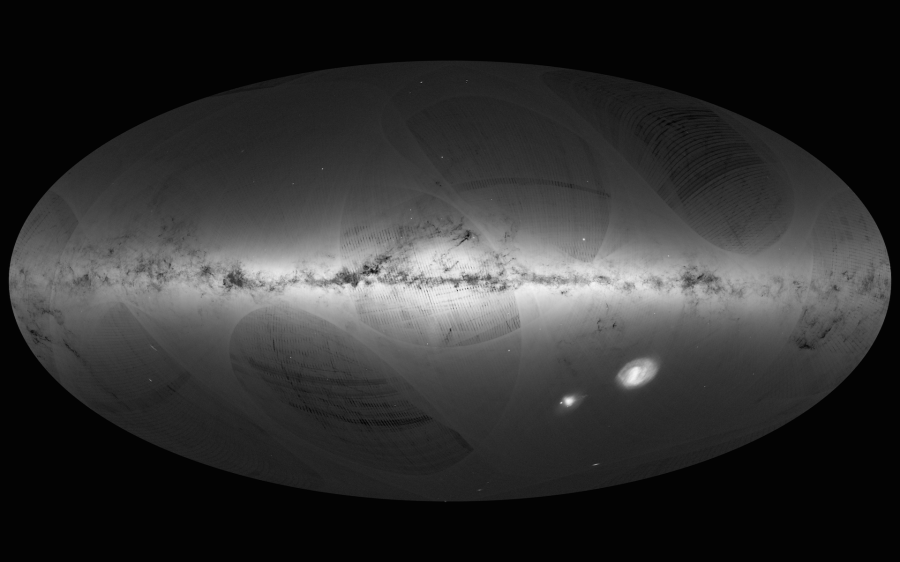Gaia Successfully Scanning the Milky Way with Significant SPACEBEL Contribution
ESA has recently released Gaia’s first sky map based on the observations collected during the first 14 months of operations of the star-surveying satellite, i.e. from July 2014 to September 2015.
Launched in December 2013, the ESA astronomy mission will chart the most detailed 3D layout of our galaxy in order to better understand stellar evolution and the formation history of the Milky Way.
So far, Gaia has carried out an enormous amount of measurements, delivering 40 gigabytes of data every single day.
The first stellar catalogue contains information on the accurate position and brightness of 1,142 billion stars along with the distance and motions across the sky for more than 2 million stars. Astronomers worldwide already have unlimited access to these first Gaia data.
ESA scientists qualify the collected data as extraordinarily useful and promising. They even show that our galaxy is larger in extent than assumed until now.
A second data release, planned for late 2017, will include even more precise position as well as distances and motions for all stars.
SPACEBEL is particularly satisfied with these first successful mission results as we have developed the management software of the Gaia Payload Data Handling Unit for Airbus Defence and Space Ltd, prime contractor of the industrial Gaia consortium. The Payload Data Handling Unit is a mass memory device storing the scientific data from seven video units before transferring them to the ground stations. An elaborate file management system allows flexible and efficient data transfer through virtual channels organized in the downlink. With Gaia, SPACEBEL notches up a new remarkable reference thus confirming our expertise in the field of flight segment software.
Gaia’s mission will end in mid-2019 unless ESA decides to extend the mission until 2024.
Let’s hope the wonderful Gaia story will continue…

©ESA
